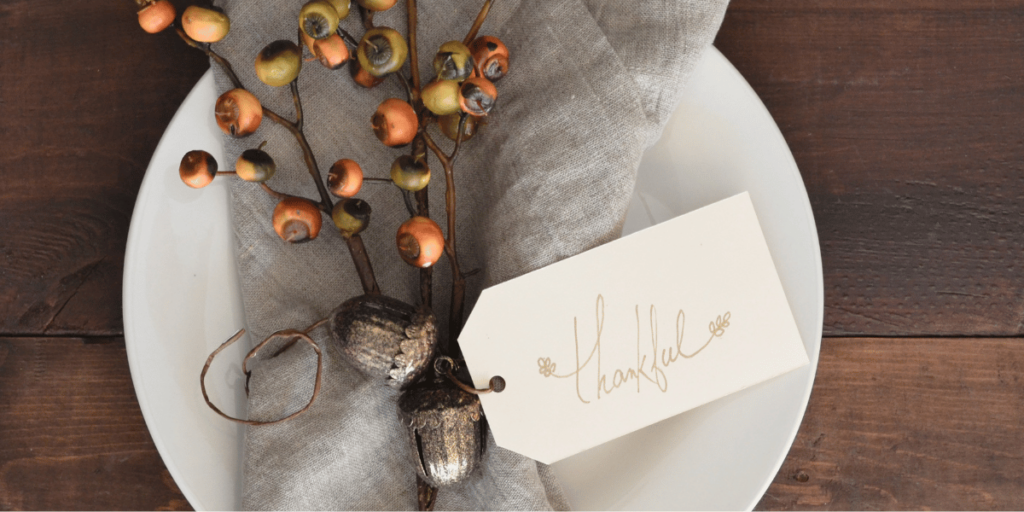The Encouraging Secret that Will Transform Your Election Season – Part 1
We are days from an election. Red vs. blue. Talking heads are digging in their heels on extreme positions. Political texts seem to arrive every five minutes (I live in the battleground state of Georgia, but I know it’s everywhere). And of course, there are very real and legitimate concerns.
But the concerns I have are of a different nature: How do we walk through this ongoing season well? How do we navigate this time in a way that preserves our relationships, our mental health, and—for those of us who are people of faith—our ability to be ambassadors for Jesus in a fractured world?
I am not going to talk politics in this article. What I am going to do is provide a data-driven reality check and share a truly startling secret that will transform our experience of this fraught election season if we let it. Because—let’s be honest with ourselves—the “fraught-ness” of this season is probably not going to be complete next Tuesday.
So to help us through these next few weeks or months, let’s learn (in Part 1) about this encouraging secret, and then (in Part 2) we’ll identify steps to help us go forward well.
The Secret: We’re Not As Divided as We Think
For years now, everything we’ve seen in the media has blared us vs. them. But, in fact, is it really just … us?
I’ve been looking at this for the last few years, and noticing it in my interviews … and now data is coming out to confirm it: Yes, there are many big differences of opinion, but in most cases, most of the time, our society is not actually as divided as we think.
Since I can see your skeptical faces now, let me encourage you to consider a few factors, including some fascinating new research.
First, at the most basic level, think about your daily experience of living and working around others. Yes, there are always the loud people, and the ones with extreme views. But when you consider average daily life it’s likely that you’ll realize the same thing Jeff and I see in our travels: There are people all around us who hold different views but similar interpersonal values. They are just trying to value others, love their families, and live peaceful lives. This is true in urban and rural settings, coastal and inland, red states and blue.
So why does it seem that everyone is at war with one another? There are many reasons, but one is preeminent.
Media demand drives the appearance of intense division.
I’ve never shared this publicly, but here’s a personal anecdote that illustrates a primary reason our divisions appear magnified far beyond what they are.
A number of years ago, I was essentially being “auditioned” as a cultural commentator on a major secular television outlet. As a researcher and an evangelical wife and mom, I was filling a given “seat” to respond to two or three other people with very different opinions about news of the day. I would go into the studio building to get my makeup and hair done, and then go sit on camera and cross swords.
Only … I didn’t cross swords enough. The newsy issues we discussed on set were interesting. (What was our reaction to the moral failure of this nationally recognized pastor, or that educational policy, or the latest racial controversy?)
But it became clear that the producers did not want interesting, reasoned discussion. They wanted sparring partners. I was invited back several times, but the last two times I noticed the senior producer’s annoyance when I agreed with the others in the areas where I could. The producer wanted to hear where I passionately disagreed. They wanted anger, controversy, and for us to find things we disagreed about.
My thoughts were too mainstream, and expressed too respectfully, so I was boring. I wasn’t invited back.
And can you blame the producers? Their job is to keep people from changing the channel. People who respond in reasonable ways—like the vast majority of us tend to do in our real-life living rooms and offices—aren’t riveting. Half of a producers’ job is to find issues on which we disagree, then find the people who disagree the most (or the most vocally), and get them on camera. Hot takes hold viewers.
Is it any wonder that it looks like we are hopelessly divided? Is it any wonder that it looks like people who disagree with us are hopelessly extreme? Because of what consumers want to see (all of us have to plead guilty), we are given exactly what we have asked for: division and discord and extreme presentations about “the other side.”
Again, I’m not discounting that there are issues that deserve intense focus and debate. But it is just as important that we navigate those issues well and that we recognize that those who hold intense and extreme positions on those issues are a small minority.
Research proves the point
A series of research surveys and polls shows, as this interesting Axios article puts it, “a striking amount of agreement on some very big topics,” including about various fundamental rights, financial and economic issues, and even many social issues.
And per the prior point about how the media presents things, look closely at the numbers in this large AP/NORC poll, and see if you agree with the opening line that “The public is divided…”
Analytically, I hate to break it to whoever wrote that line, but what I see in the numbers is a minority of actual issues on which we are very divided and more on which we disagree by relatively few percentage points. The places of huge and stark disagreement are mostly about how we view people on “the other side.”
And this brings me to another important data set. A robust research study, conducted by the non-partisan think tank Populace found that we have much more common ground than we think—in part because what we say publicly doesn’t always match what we believe privately.
Called the Social Pressure Index, the research found that people privately agree on many/most issues. Including sensitive cultural topics (think: abortion, school choice, immigration, voter ID requirements). On two-thirds of the issues studied, 90% of demographic groups are privately on the same side!! It’s just that many share different views publicly due to virtue signaling, fear of offending, or other reasons.
Now, don’t misunderstand: that means that on one-third of sensitive issues, there is much broader disagreement. But again—those issues are in the minority.
Action Step #1: See most “others” as reasonable rather than radical
So here’s your simple first action step. It’s one that will help you (and the friends or family that you’d like to forward this blog to for encouragement) navigate the commentary and controversy flooding our newsfeeds before and after the election:
Each time you see something that concerns you, stop and remind yourself: This is the most extreme example the producers/editors could find. And, even if true, most people of the other party are not that extreme.
Having a better perspective on the issues—and the sanity and “normalcy” of the people we disagree with—won’t make our preferred candidates win. It won’t solve the dysfunction that we see in some of our government institutions. But it will allow us to be people who stop contributing to the problem and start contributing to the solution. It will provide a start to being people who can build bridges and represent our faith well in the public arena. Knowing we are closer than we think is simply an entry point to the greater goal: a way to help heal the fractures and become closer as a society again.
As we go forward into the next week, I urge everyone to pray for the election and our leaders—no matter who wins the various contests. And come back next week for Part 2—intentionally planned for next Thursday to help us navigate the post-election season well.
If you are interested in having Shaunti bring research-based strategies, practical wisdom and biblical principles to your next event, please contact Nicole Owens at [email protected].
Transform Your Relationships with Kindness! Join the 30-Day Kindness Challenge and Embrace the Power of Positivity. Watch as Kindness Strengthens Your Connections and Creates Lasting Bonds.
Please note: This post may contain affiliate links. As an Amazon Associate we earn a small amount from qualifying purchases through these affiliate links. This doesn’t cost you anything, and helps us continue bringing you great content!







